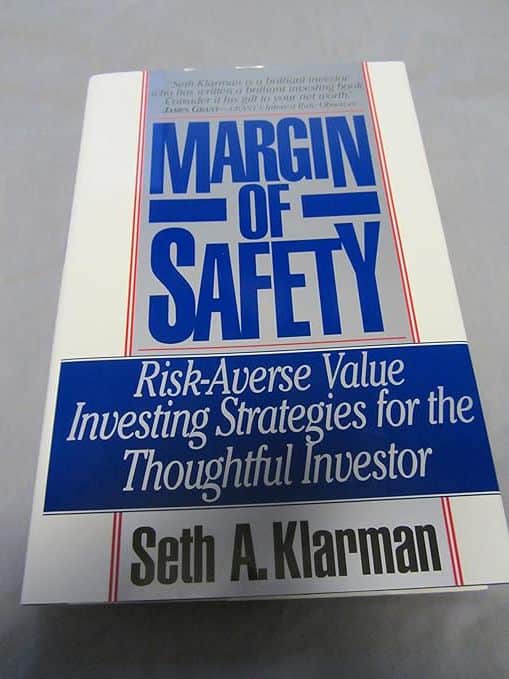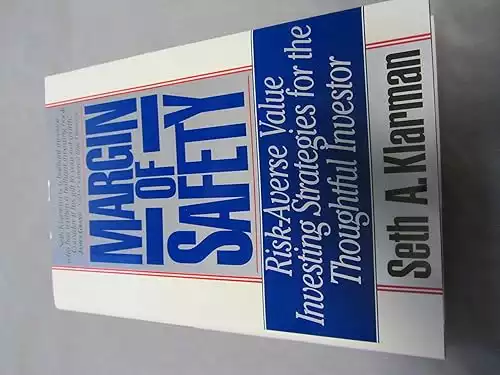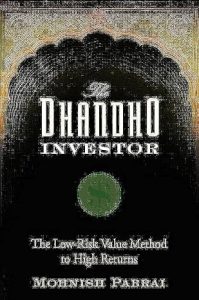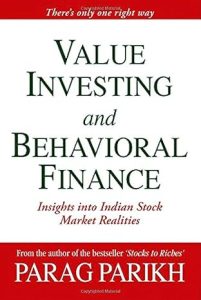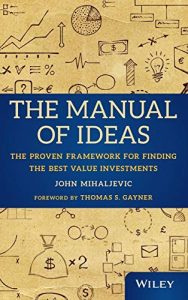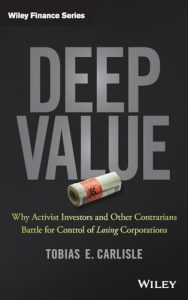- Book Title: Margin of Safety: Risk-Averse Value Investing Strategies for the Thoughtful Investor
- Author(s): Seth A. Klarman
- Publication Date: October 1991
Introduction
Margin of Safety: Risk-Averse Value Investing Strategies for the Thoughtful Investor," written by Seth Klarman, is a seminal work in the field of value investing. Published in October 1991, this book encapsulates Klarman's investment philosophy, which emphasizes the importance of a cautious and risk-averse approach to investing. Klarman, a renowned hedge fund manager and the founder of Baupost Group, advocates for strategies that prioritize capital preservation and mitigate risk, making his insights particularly valuable for finance professionals seeking to navigate volatile markets and ensure long-term investment success.
Content Summary
Key Concepts
- Value Investing: Klarman delves into the principles of value investing, a strategy that involves purchasing securities that appear underpriced by some form of fundamental analysis. He underscores the significance of understanding the intrinsic value of an asset and investing when its market price is significantly below this value.
- Margin of Safety: Central to Klarman's philosophy is the concept of the "margin of safety," which he describes as the difference between the intrinsic value of a stock and its market price. This margin acts as a buffer against errors in analysis or unforeseen market downturns, providing investors with a safety net.
- Risk Management: Klarman stresses the importance of managing risk, advocating for a conservative investment approach that minimizes the likelihood of significant losses. He emphasizes the need for thorough research and analysis, as well as a disciplined investment strategy.
Core Topics
- Understanding Market Inefficiencies: Klarman discusses how markets can often be inefficient, with prices deviating from their intrinsic values due to various factors such as investor behavior, market sentiment, and economic events. He explores how these inefficiencies can be exploited by patient and informed investors.
- Analyzing Financial Statements: A significant portion of the book is dedicated to the meticulous analysis of financial statements. Klarman guides readers through the process of evaluating a company's financial health, including balance sheets, income statements, and cash flow statements, to determine its intrinsic value.
- Assessing Risk vs. Reward: Klarman emphasizes the importance of balancing risk and reward in investment decisions. He advocates for a cautious approach that carefully weighs potential returns against the associated risks, ensuring that investments are made with a substantial margin of safety.
- Investment Strategies and Techniques: The book outlines various strategies and techniques that investors can employ to identify undervalued securities and manage their investment portfolios. Klarman provides practical insights into the application of value investing principles in different market conditions and across various asset classes.
By focusing on these key concepts and core topics, "Margin of Safety" offers a comprehensive guide for finance professionals who aim to adopt a risk-averse investment approach. Klarman's emphasis on thorough research, disciplined strategy, and the preservation of capital makes this book an essential read for thoughtful investors.
Critical Analysis
Strengths
- Comprehensive Coverage of Value Investing Principles:
- Klarman provides a thorough exploration of value investing, making complex concepts accessible to both novice and experienced investors. His detailed explanations and practical examples help readers grasp the fundamentals of identifying undervalued assets and understanding market behavior.
- Emphasis on Risk Management and Capital Preservation:
- One of the book's standout strengths is its focus on risk management. Klarman's conservative approach is particularly valuable in today's volatile financial markets. He emphasizes the importance of preserving capital and maintaining a margin of safety, offering strategies that prioritize long-term stability over short-term gains.
- Practical Insights and Real-World Examples:
- Klarman enriches his theoretical discussions with numerous real-world examples, illustrating how value investing principles can be applied in practice. These examples help bridge the gap between theory and practice, providing readers with actionable insights they can implement in their own investment strategies.
Weaknesses
- Limited Availability and High Cost:
- One of the main drawbacks of "Margin of Safety" is its limited availability. The book is out of print and has become a collector's item, often fetching high prices on the secondary market. This restricts access for many potential readers, especially those who are new to investing.
- Somewhat Dated Examples and Market Conditions:
- Although the principles outlined in the book are timeless, some of the examples and market conditions discussed are specific to the late 20th century. Contemporary readers might find certain references outdated, particularly those related to market regulations and financial instruments that have since evolved.
Comparative Analysis
- Comparison with Benjamin Graham's "The Intelligent Investor":
- Both Klarman and Graham emphasize the importance of a margin of safety and a conservative investment approach. However, while Graham's work lays the foundational principles of value investing, Klarman builds upon these concepts, offering more detailed strategies and a stronger focus on risk management. "The Intelligent Investor" is often recommended as the starting point for value investors, while "Margin of Safety" serves as an advanced guide for those seeking deeper insights.
- Contrast with Modern Investment Strategies:
- Compared to modern investment strategies that often focus on growth investing, quantitative analysis, or algorithmic trading, Klarman's approach appears more traditional and conservative. While contemporary methods may offer higher potential returns, they also come with increased risk and volatility. Klarman's emphasis on risk aversion and capital preservation provides a counterbalance, appealing to investors who prioritize stability and long-term success over short-term gains.
In summary, Seth Klarman's "Margin of Safety" is a valuable resource for finance professionals, offering deep insights into value investing and risk management. Its strengths lie in its comprehensive coverage of investment principles, practical examples, and emphasis on capital preservation. However, its limited availability and somewhat dated references may pose challenges for contemporary readers. Despite these limitations, the book remains a critical addition to the library of any thoughtful investor, complementing foundational texts like Benjamin Graham's "The Intelligent Investor."
Notable Quotes
- On Margin of Safety:
- "The concept of a margin of safety...means never forcing anyone to jump over a seven-foot fence when there is a three-foot fence he can step over."
- On Value Investing:
- "Value investing is at its core the marriage of a contrarian streak and a calculator."
- On Risk Management:
- "Investors need to recognize that while diversification is a good way to mitigate risk, it cannot eliminate it. The most important rule of investing is not to lose money."
- On Market Inefficiencies:
- "Markets are inefficient because human emotions influence stock prices, creating opportunities for those who can remain calm and rational."
- On Patience and Discipline:
- "Successful investing requires patience, discipline, and a keen understanding of human behavior. The ability to wait for the right opportunity is crucial."
- On Long-term Perspective:
- "The single greatest edge an investor can have is a long-term orientation. Investing is a marathon, not a sprint."
- On Intrinsic Value:
- "Intrinsic value is the true worth of a business, based on its fundamentals. The market price, on the other hand, is merely the price at which you can currently buy or sell that business."
- On Avoiding Speculation:
- "Speculation is the attempt to profit from short-term market movements, while investment is the endeavor to earn returns based on the long-term value of an asset. True investors avoid speculation."
- On Investment Strategy:
- "A good investment strategy is one that is simple and repeatable. Complexity often leads to confusion and mistakes."
- On Emotional Resilience:
- "The best investors are those who can remain detached from the emotional ups and downs of the market. Emotional resilience is a key component of successful investing."
These quotes encapsulate Klarman's investment philosophy, emphasizing the importance of a margin of safety, the value of patience and discipline, and the need for a long-term perspective. They serve as guiding principles for investors seeking to adopt a risk-averse, value-oriented approach.
Conclusion
Summary: "Margin of Safety: Risk-Averse Value Investing Strategies for the Thoughtful Investor" by Seth Klarman offers a comprehensive and in-depth look into the principles of value investing and the critical importance of risk management. The book underscores the necessity of maintaining a margin of safety, conducting thorough financial analysis, and exercising patience and discipline in investment decisions. Klarman's detailed examples and practical insights bridge the gap between theoretical concepts and real-world application, making complex ideas accessible and actionable for finance professionals.
Recommendation: "Margin of Safety" is highly recommended for finance professionals, particularly those who prioritize capital preservation and a conservative approach to investing. Klarman's emphasis on risk aversion and his comprehensive methodology provide a valuable framework for navigating volatile markets and ensuring long-term investment success. Despite its limited availability and some dated references, the book's core principles remain timeless and relevant.
Final Thoughts: Seth Klarman's "Margin of Safety" is a seminal work that stands out in the field of value investing literature. It complements foundational texts like Benjamin Graham's "The Intelligent Investor" and provides deeper insights into managing risk and identifying undervalued assets. For investors seeking to refine their strategies with a focus on safety and long-term gains, this book is an essential addition to their library. Klarman's thoughtful and cautious approach serves as a guiding light in an often unpredictable and volatile financial landscape.

